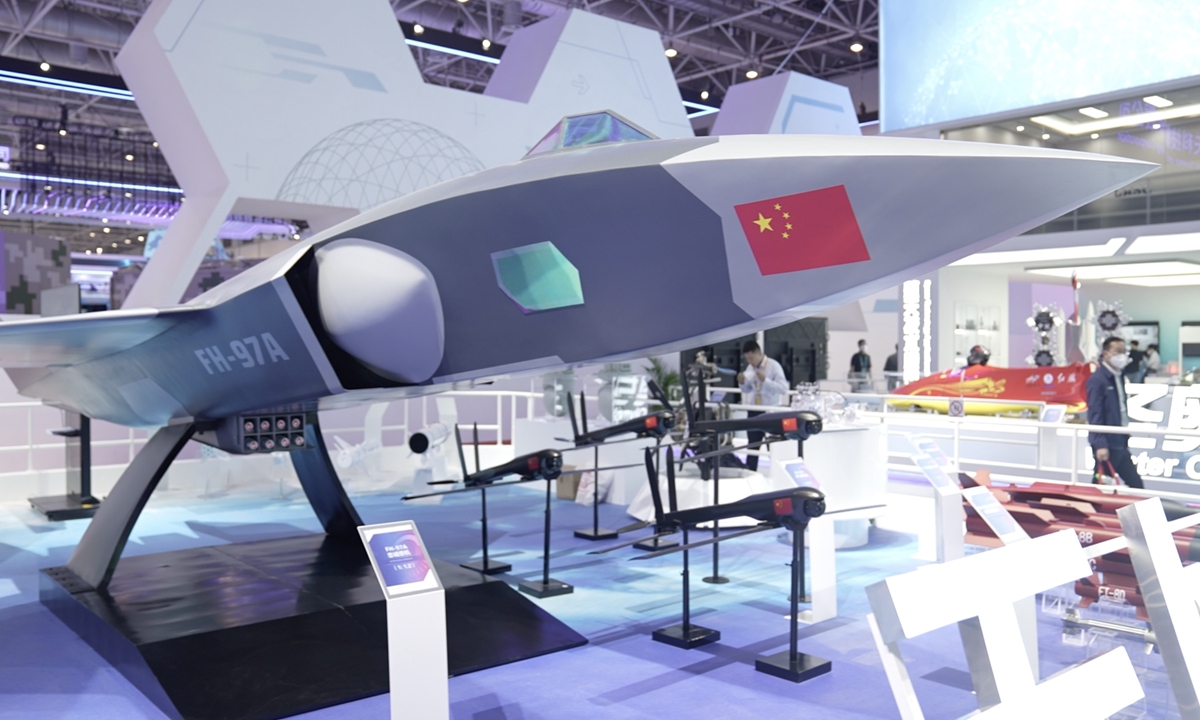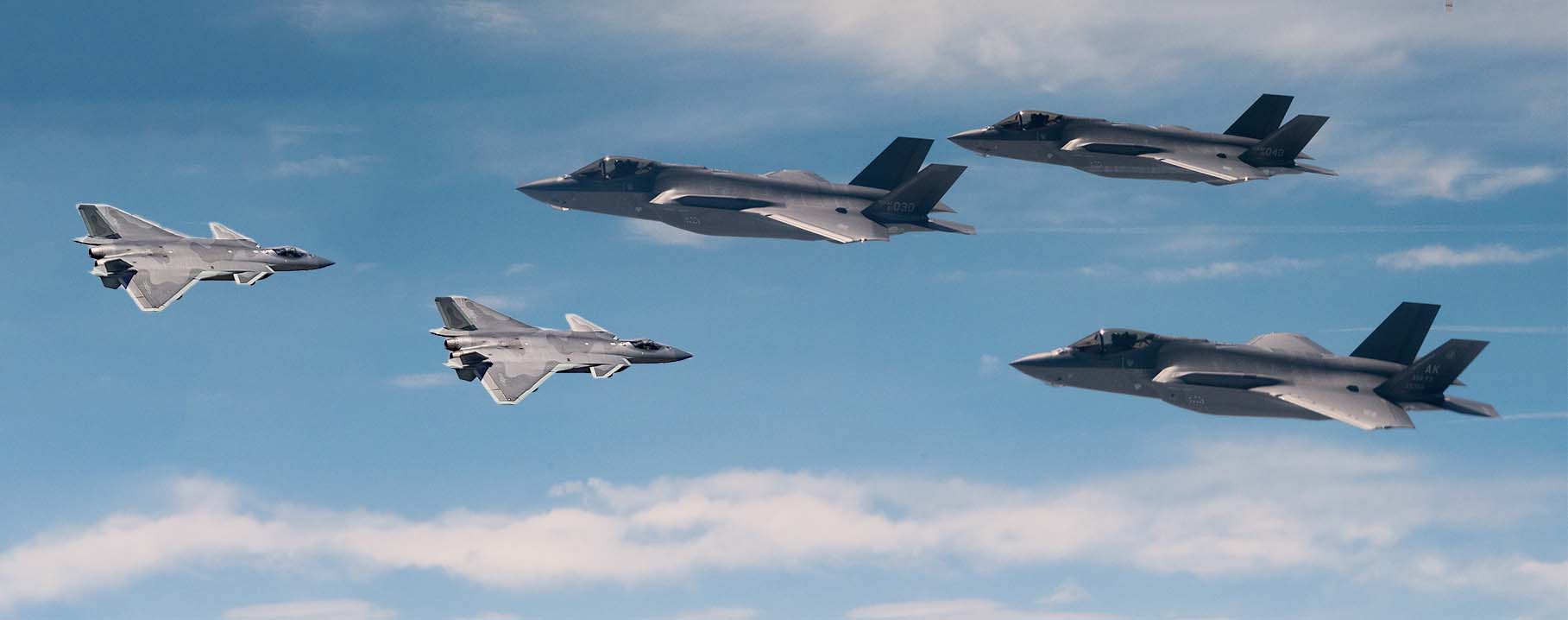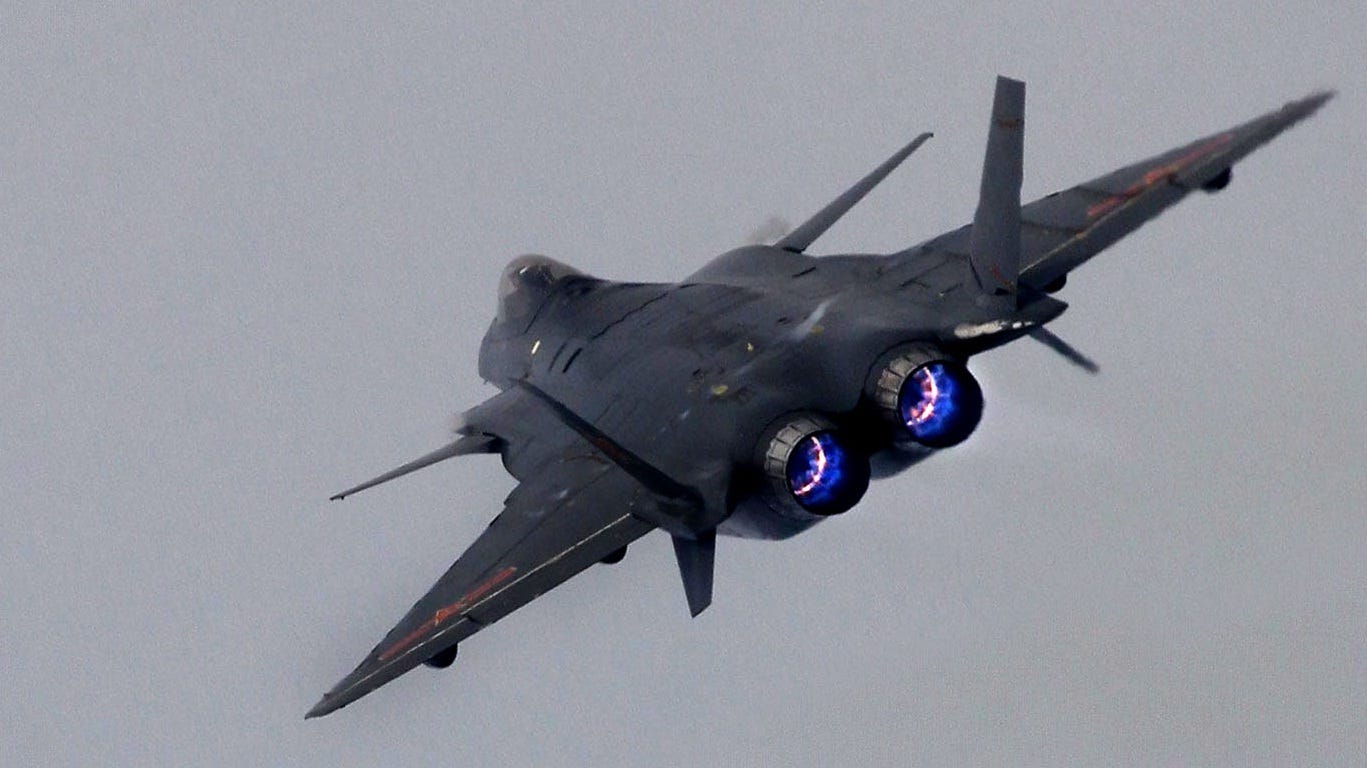J-20 Thrust Vectoring - Can a guy from South Carolina make a difference in Ukraine? Brian Wright was determined to find out.
It took only two weeks for one of the Ukrainian army's newest brigades to receive American-made M-2 combat vehicles
J-20 Thrust Vectoring

TOPSHOT - A Chinese J-20 stealth fighter jet makes an appearance at the Airshow China 2018 in Zhuhai in south ... [+] China's Guangdong province on November 6, 2018. (Photo: WANG ZHAO / AFP) (Photo: WANG ZHAO/ AFP via (Getty Images)
Thrust Vectoring J 20 Version In Production, Newspaper Says
A new model of China's Chengdu J-20 stealth fighter, the J-20B, has entered "mass production" with sophisticated new thrust vector controls that significantly improve maneuverability to "meet the original criteria," a report said Monday.
According to an anonymous source cited by defense journalist Minnie Chan, the start of production was celebrated at a ceremony on July 8 attended by the vice chairman of China's Central Military Commission.
The twin-engine J-20A "Mighty Dragon" entered service in 2017, and is today the only operational stealth aircraft designed outside the United States. According to estimates, around 50 have been built so far.
Claims that the J-20B will be based on Saturn AL-31F M2 turbo engines imported from Russia instead of the higher powered indigenous WS-15 engines China is still struggling to perfect for production.
China's J 20 Stealth Fighter Is Getting A Major Boost
Chengdu Aviation Corporation has reportedly set up four production lines, each capable of producing one J-20B per month, and the Chinese military is reportedly satisfied enough with the model's tweaks to place a large order. However, Chan's paper lists only one major new technology.
The exhibition of the engines of the Russian Su-35 fighter jet at the "China Airshow 2014" in Zhuhai. 10NOV14 (Photo by ... [+] Dickson Lee/South China Morning Post via Getty Images)
Thrust Vector Control (TVC) allows a pilot to tilt a jet engine's exhaust nozzles to redirect thrust, enabling aircraft such as the F-22 Raptor and Russia's Su-35S Flanker to perform jaw maneuvers at very high angles of attack, meaning that nose of the aircraft is aimed at an angle much greater than the current vector of the aircraft.

Such maneuvers can give the pilot an advantage when evading a missile or seeking an advantageous position in air-to-air combat at visual range.
Thrust Vectoring J 10 Stars At Zhuhai
But many modern fighters do not use thrust vectoring engines. First, maneuvers utilizing a thrust vector drain the aircraft's energy very quickly, leaving it in a low-energy state vulnerable to follow-up attacks. This was reportedly a shortcoming exploited by US F-15s in the Red Flag exercise against Indian Air Force thruster Su-30MKIs in 2008.
Therefore, Western designers mostly saw the added weight and complexity of thrust vectoring controls as not worth the extra cost outside of the air-to-air specialist F-22 Raptor or jump jets like the Harrier or F-35B Lightning. , which mainly utilizes a thrust vector for the ability to take off and land short or vertical.
If correct, the decision to install thrust vectoring on the J-20B suggests the intended role of the Chinese stealth fighter.
Initially, a Western analysis of the J-20 judged it to be a fast and difficult interceptor or attack fighter – but not very maneuverable, optimal for hit-and-run attacks, and not an air superiority fighter designed to engage enemy fighters. . Conducting close air combat maneuvers.
Chinese Aircraft Engines Are Actually \
Chan's article notes Western reports of the J-20A's "lack of maneuverability"—though it is unclear whether the PLAAF agreed with that assessment.
This narrow view of the J-20's intended role and capabilities has received a boost in recent years from some analysts.
In December 2016, China struck a deal to import 24 Su-35S fighter jets - an order widely speculated to be primarily to acquire the Russian jets with propulsion capability for research by Chinese engineers.

Then in 2018, a J-10C fighter jet equipped with thrust vectoring control was displayed at the Zhuhai Air Show, revealing the Chinese development of the technology.
Fifth Generation Fighter
Want to improve the maneuverability of the J-20. This again suggests an intention for the J-20 to perform a traditional air superiority role of engaging and defeating agile enemy fighters.
To be clear, low radar visibility and long-range missiles and sensors will likely remain the J-20's primary asset in air-to-air combat. But air-superior fighter should ideally be able to stay within visual range, especially if facing advanced fighters capable of evading sensors and/or long-range missiles.
Unfortunately for the PLAAF, a more important puzzle piece to unlocking the J-20's intended performance remains out of reach, according to Chan's article: a locally built WS-15 turbofan engine capable of producing 44,000 pounds of thrust. The AL-31F M2 engine currently in service produces 32,600 pounds of thrust.
The refinement of the WS-15 will finally allow the J-20 to improve on its current low thrust-to-weight ratio. It could also eventually free Chinese manufacturers from their dependence on Russian-built jet engines.
Photos Of Possible Single Ws 15 Thrust Vectoring Engine Being Tested On A J 20 [1024x499]
A turbofan engine manufactured by the Aviation Industry Corporation of China (AVIC) is presented at the ... [+] exhibition on the development of military-civilian integration of science, technology and industry for national defense in Beijing. 17 Jul 15 === Photo by Simon Song === (Photo by Simon Song/South China Morning Post via Getty Images)
Serious quality control problems have dogged China's attempts to mass-produce local Shenyang WS-10 Taihang turbomanifolds for years, leading to frequent substitution with Russian engines. The Xian WS-15 Emei turbofan will inevitably have to overcome these issues while pushing performance even further.
Chan's source claims that development of the WS-15 is progressing "smoothly" and that it could be ready in "a year or two", at which point the J-20B will be able to replace WS-15 aircraft with AL-31 engines. However, such estimates have been wrong in the past and it must be disappointing for the PLAAF that the second production model of the J-20 fighter is to enter service, still with lower thrust engines.

To be fair, Russia also uses a stalled turbofan engine in its troubled Su-57 stealth jets until a higher thrust model is ready in the later 2020s.
Usaf Confirms: The Chinese J 20 Spotted In Georgia Is A Mock Up Used For Training By The U.s. Marine Corps
Apart from these issues, the reports on the J-20B model indicate the continued maturation of the J-20 platform and add to the evidence that it is intended to be used as an air superiority fighter capable of staying against agile enemy fighters.
This, in turn, may pose new challenges to the doctrine of air superiority in countries such as India, Japan and the United States that compete with China in the Indo-Pacific.
Andreas Rupprecht, an expert on Chinese military aviation, contacted me on Twitter to express his skepticism
He said open source evidence points to indigenous WS-10C turbofan engines being used in new J-20s. The WS-10C has improved thrust, has a more stealthy serrated nozzle, and is apparently more reliable than previous WS-10 turbochargers. However, it is not designed for thrust vector control, unlike the WS-10B-3 TVC engine demonstrated on a J-10 fighter in 2018. PLAAF's J-20 'Closing The Gap' with F-22 Raptors; China showcases its 2D thruster technology at the Zhuhai Air Show
Chengdu's J 20 Enters Production
China has introduced a turbofan engine with a 2D thrust vector control nozzle at the ongoing Zhuhai Airshow 2022. A turbofan engine with a 2D thrust vector control nozzle provides improved maneuverability and stealth.
Chinese engineers have reportedly been working on this technology to close the gap between the capabilities of its J-20 stealth fighter and the F-22 Raptor, which uses the thrust vector control nozzle.
According to the AECC, these five different versions of the Taihang series are used in other PLA Air Force aircraft. Once powered by Russian engines, China's fighters such as the J-10 and J-20 are now powered by different versions of the Taihang engines.

Although Taihang engines have been around for some time, the engine with thrust vector control technology caught the attention of visitors at the air show.
China's J 20 Stealth Fighter Is Getting An Upgrade—thanks To Russia
The manufacturer or Chinese officials did not directly name the Taihang engine that contains this cutting-edge technology. However, the engine was expected to be the WS-10 variant, military observers noted.
According to the state-owned Aero Engine Corp of China (AECC), the Taihang engine continued to receive technical upgrades that improved its performance, reliability, safety, stealth, power extraction, environmental adaptability, endurance and traction.
Wei Dongxu, a Chinese military expert, told the Global Times at the air show that thrust vectoring can significantly increase the fighter's maneuverability by delivering thrust directly in the desired direction and using aerodynamics.
It has become crucial for the PLAAF to integrate this technology with rising tensions in the Indo-Pacific. The area is now becoming "crowded" with American stealth fighters.
China's J 20 Stealth Fighter Shows Off Foxy Maneuvers At Air Show
"The development in China of a turbofan engine with a 2D pressure vector control nozzle means that the engine has enough power to cope with the loss of pressure," Wei said.
2D TVC engine could be a new version of WS-10 (definitely not WS-10B TVC) or WS-19/XX for J-35 Stealth Fighter 🤔 Best surprise from #ZhuhaiAirShow2022 so far imopic.twitter.com/8RP1PRghsT — Húrin (@intel1osint100) November 6, 2022
Last year, J-20 pilot Li Gang said in an interview that he would like the J-20 to be upgraded with two-dimensional thruster jet engines.

Later, in January 2022, China announced that it would begin upgrading the engines of its J-20 fifth-generation stealth fighter with modern technology to match the capabilities of the US F-22 Raptors.
China's Advanced J 20 Stealth Fighters Are Getting An Engine Upgrade, Source Says
According to previous reports, the WS-10C is a stopgap arrangement until the more advanced WS-15 engines are ready for installation. However, the WS-10C, which is also used by other PLAAF fighters, limits the capability
Su 35 thrust vectoring, thrust vectoring, edf thrust vectoring, thrust vectoring nozzle, thrust vectoring motor mount, thrust vectoring nozzle design, eurofighter typhoon thrust vectoring, f 16 thrust vectoring, thrust vectoring engine, f22 thrust vectoring, rc thrust vectoring, thrust vectoring rc jet
0 Comments